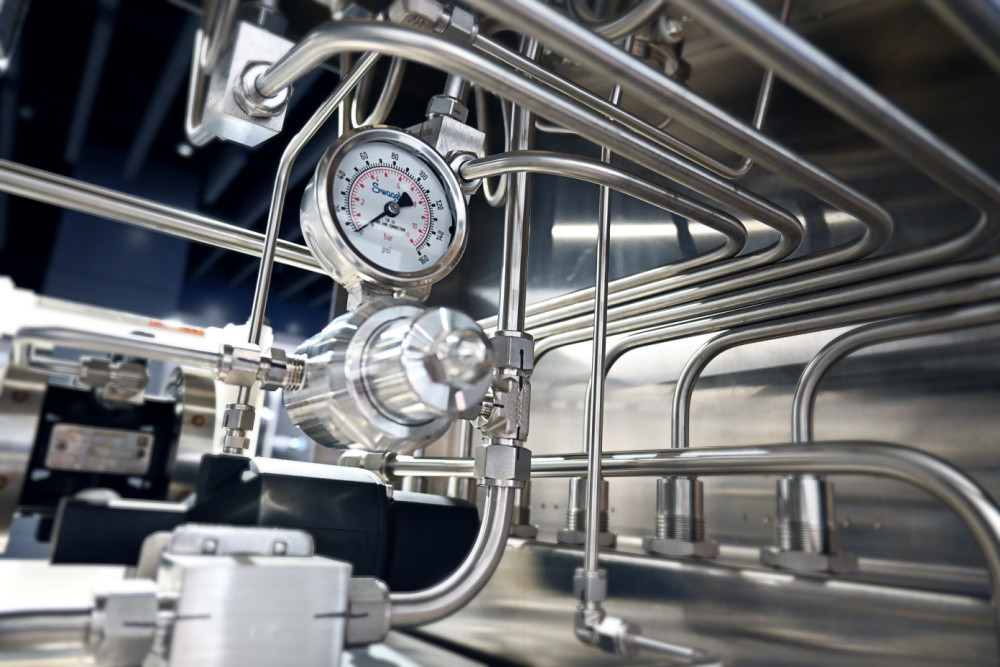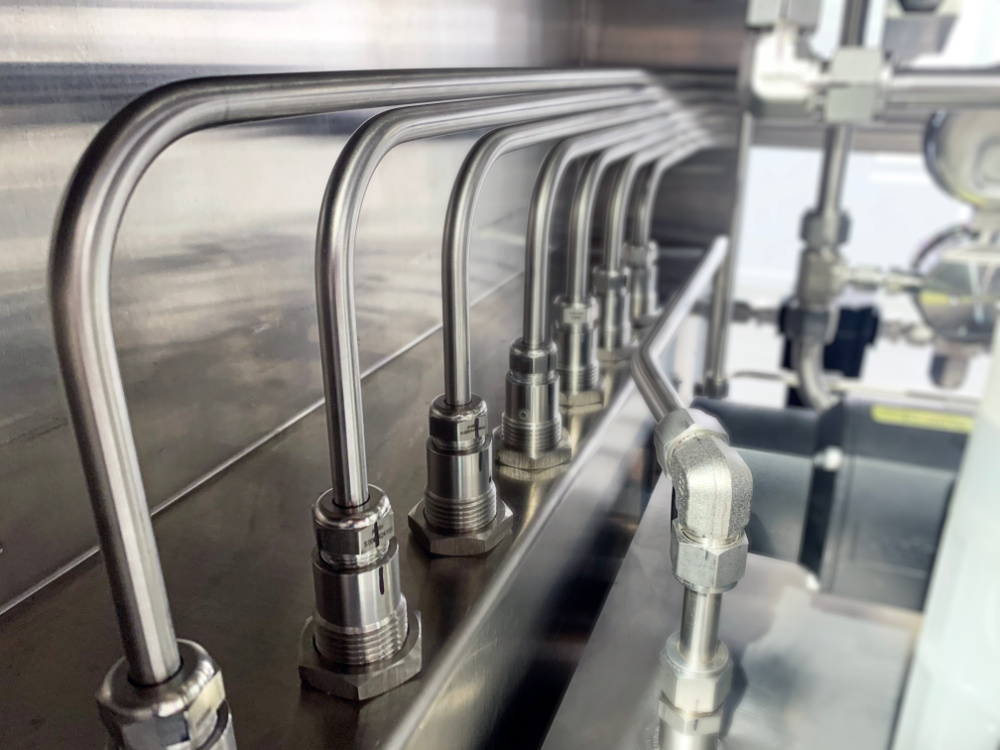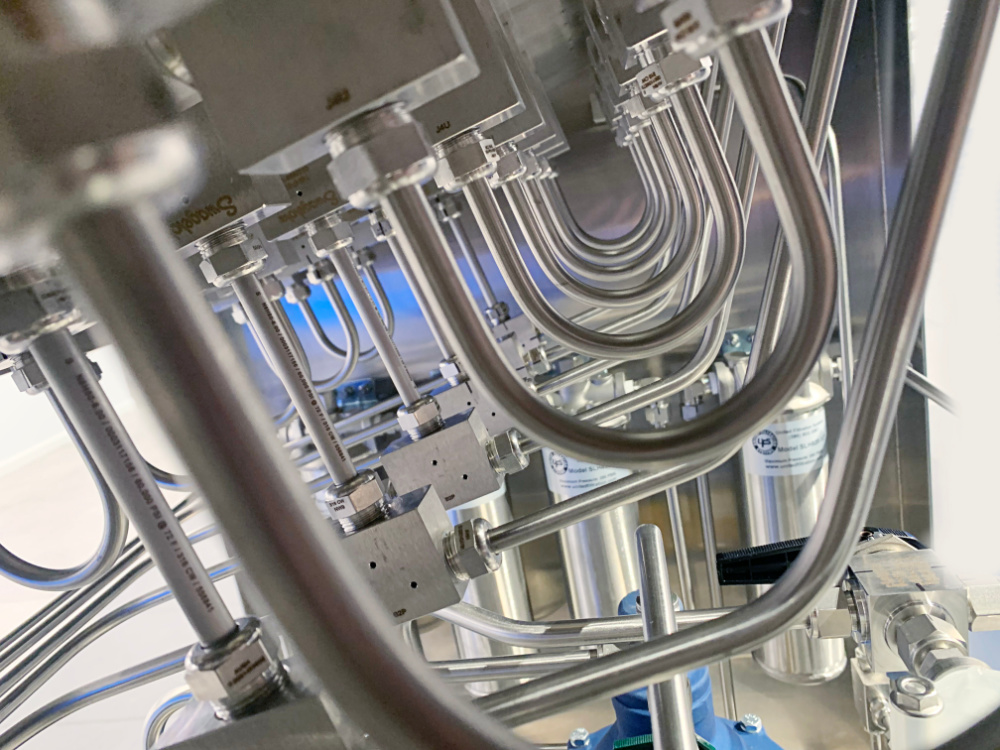The Gulf of Mexico is a fragile ecosystem that presents significant challenges to world-leading oil extraction companies as they drill in its depths to provide oil to a world market. It requires significant investments of time and money to make these wells a success without damaging the Gulf’s pristine environment. Companies that decide to take on the challenge must concern themselves with the safety, containment and reliability of their equipment—and the components within them.
Hydraulic pressure units (HPUs) provide steady, medium-to-high pressures to manage safety devices, valves and other critical fluid system components in the wells and are one of the essential pieces of equipment companies must have to operate wells successfully (Figure 1). Without them, systems are prone to breakdowns, resulting in downtime that can cost hundreds of thousands of dollars per day. Depending on how the well fails, it can also cause safety and environmental risks.

One avenue to finding reliable HPUs is to build customized units in partnership with a reliable equipment supplier. The right supplier should be able to provide ongoing engineering and design support to make it easier to use and service the equipment. This allows oil extraction companies to focus on what they do best—supplying the world with inexpensive energy.
Under Intense Pressure
Fluid system components in these wells must be able to withstand more pressure than ever before to safely and economically maintain the well, because drilling in the Gulf of Mexico often occurs at depths of 1,000 to 3,000 feet, putting additional pressure of up to 20,000 psi or more on the equipment.
Not only are HPU components subject to the pressures of deepwater and ultra-deepwater oil and gas exploration, but the tubing associated with the well is also stressed under those conditions. The tubing could be up to 60,000 feet long, and its reliability—and that of the corresponding fittings—is essential. Failures in the tubing or fittings could put crew members in danger while bringing production to a halt.
In addition, leaks can cost hundreds of thousands of dollars in lost production. Deepwater well maintenance is complicated, expensive, and can take a well offline for significant amounts of time.
How Customized Components Can Help
Suppliers with the capability to work closely with oil and gas companies on crafting HPUs to meet their detailed engineering specifications are invaluable. These suppliers can not only produce high-quality products but can make it easier for companies to use and maintain.
In addition, suppliers of customized components can provide detailed operational manuals with pictures and step-by-step instructions to allow easier training of maintenance teams. Whiteboard labeling for critical components also allows for easy identification of parts and processes.
Only through close collaboration can companies and suppliers build components that ensure safe deepwater drilling. As the industry evolves, process changes can provide new challenges for companies and their suppliers to solve. Engineered-to-order products can often take more than a year to develop, so both parties must work closely together to ensure components can adequately meet the ever-changing needs of deepwater drilling companies (Figure 2).

Results that Speak for Themselves
Under such challenging conditions, reliability is key. Oil and gas companies cannot be changing five to seven needle valves after every job, because they will no longer shut off due to damaged seats. With the right supplier, companies can avoid downtime and reactive maintenance while keeping workers safe and production efficient.
Customized HPUs can offer specific improvements over off-the-shelf equipment, including ease of access to the machines’ pumps for simpler maintenance. In addition, a customized HPU may contain both the primary and secondary pumps, which allows production to continue while maintenance is being performed. This can save companies hours, if not days if a replacement is required, or downtime if pumps fail.
Finally, high-quality, customized solutions designed specifically for the challenging deepwater fluid system applications must be flexible enough to adapt to changing conditions. Choosing the proper supplier who can adjust quickly allows them to address new challenges in real time, keeping rigs up and running.
Deepwater wells require the highest-quality components, assemblies and suppliers. Succeeding in these environments requires true collaboration, where vendors are willing to understand evolving challenges and can work collaboratively to overcome them (Figure 3).

An original version of this article appeared on the Swagelok Reference Point blog here: https://www.swagelok.com/en/blog/deepwater-fluid-system-custom-solutions#.
About the Author: Kevin Gravouia is the upstream and construction sales manager for Swagelok Louisiana.
Recommended Reading
BP Restructures, Reduces Executive Team to 10
2024-04-18 - BP said the organizational changes will reduce duplication and reporting line complexity.
EQT Declares Quarterly Dividend
2024-04-18 - EQT Corp.’s dividend is payable June 1 to shareholders of record by May 8.
Daniel Berenbaum Joins Bloom Energy as CFO
2024-04-17 - Berenbaum succeeds CFO Greg Cameron, who is staying with Bloom until mid-May to facilitate the transition.
Equinor Releases Overview of Share Buyback Program
2024-04-17 - Equinor said the maximum shares to be repurchased is 16.8 million, of which up to 7.4 million shares can be acquired until May 15 and up to 9.4 million shares until Jan. 15, 2025 — the program’s end date.
NOV's AI, Edge Offerings Find Traction—Despite Crowded Field
2024-02-02 - NOV’s CEO Clay Williams is bullish on the company’s digital future, highlighting value-driven adoption of tech by customers.





